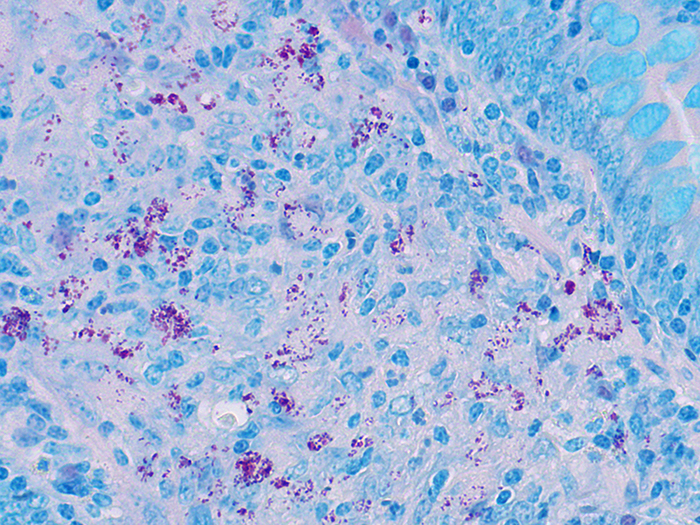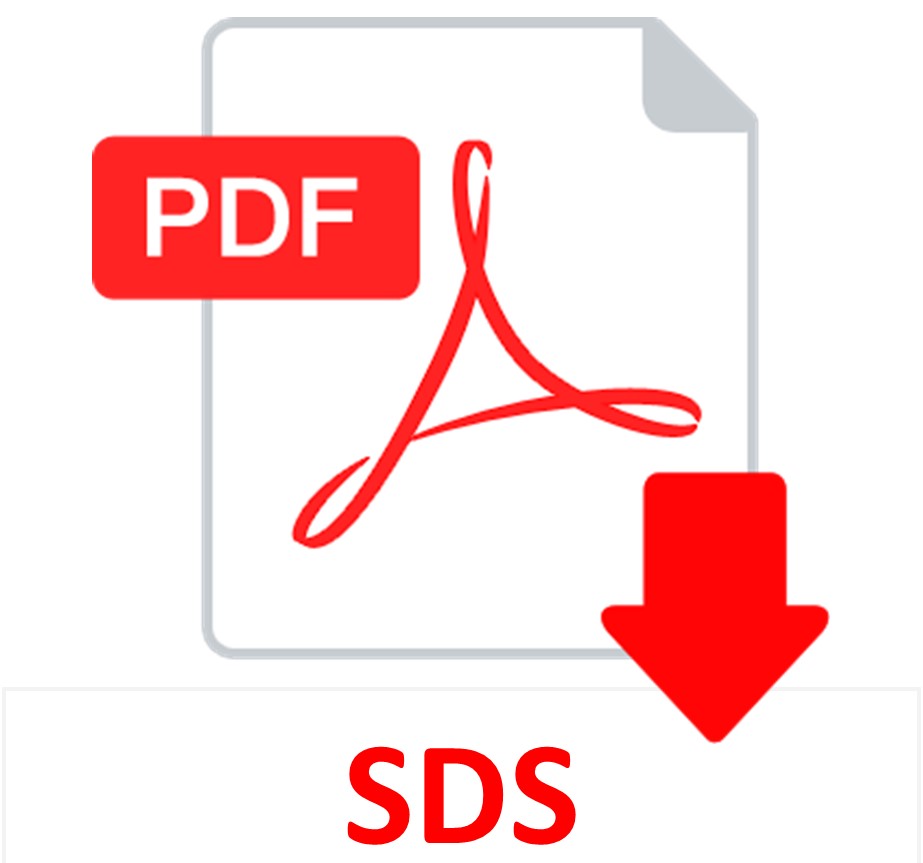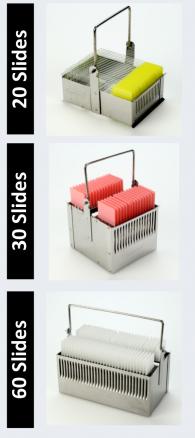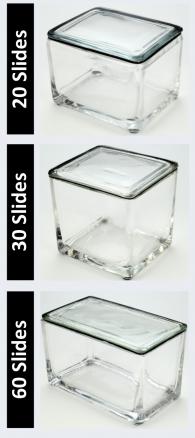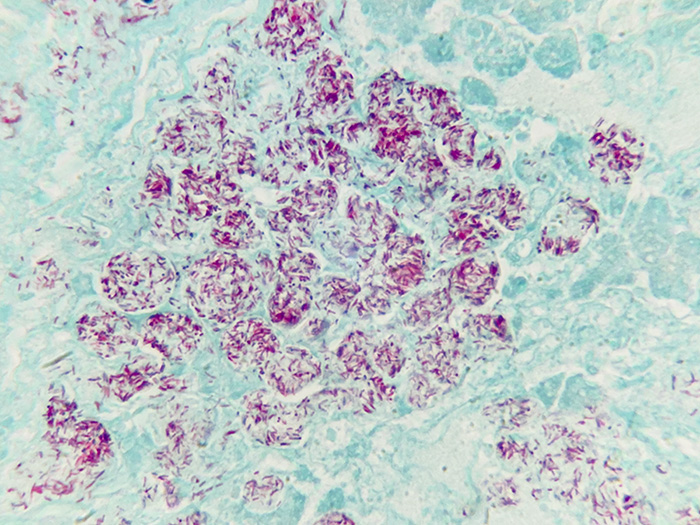AFB, Basic Fuchsin, Ellis & Zabrowarny Stain Kit
![]()
Stains acid-fast bacilli without the use of phenol. A surfactant substitution is made for phenol which renders the bacterial cell wall permeable to the stain. Results are comparable to the traditional Ziehl-Neelsen method.
AFB, BASIC FUCHSIN, ELLIS & ZABROWARNY STAIN KIT INCLUDES:
| Part 91012A | ||
| Solution A: | Basic Fuchsin Stain 1%, Alcoholic | 250 ml |
| Solution B: | Acid Alcohol 3% | 250 ml |
| Solution C: | Methylene Blue Stain 0.25%, Aqueous | 250 ml |
COMPLIMENTARY POSITIVE CONTROL SLIDES: Enclosed are two complimentary unstained positive control slides for the initial verification of staining techniques and reagents. Verification must be documented by running one Newcomer Supply complimentary positive control slide along with your current positive control slide for the first run. Retain the second complimentary control slide for further troubleshooting, if needed.
Individual stain solutions and additional control slides may be available for purchase under separate part numbers.
Additionally Needed:
| Xylene, ACS | Part 1445 |
| Alcohol, Ethyl Denatured, 100% | Part 10841 |
| Alcohol, Ethyl Denatured, 95% | Part 10842 |
| Coplin Jar, Plastic | Part 5184 (for microwave modification) |
For storage requirements and expiration date refer to individual bottle labels.
APPLICATION:
Newcomer Supply AFB, Basic Fuchsin, Ellis & Zabrowarny Stain Kit procedure, with included microwave modification, provides a safe method for staining acid-fast bacilli without the use of phenol. Results are comparable to the AFB, Ziehl-Neelsen method.
METHOD:
Fixation: Formalin 10%, Phosphate Buffered (Part 1090)
Technique: Paraffin sections cut at 4 microns
Solutions: All solutions are manufactured by Newcomer Supply, Inc.
All Newcomer Supply Stain Kits are designed to be used with Coplin jars filled to 40 ml following the staining procedure provided below. Some solutions in the kit may contain extra volumes.
PRESTAINING PREPARATION:
-
- If necessary, heat dry tissue sections/slides in oven.
- Preheat Solution A: Basic Fuchsin Stain 1%, Alcoholic to 60°C in an oven or water bath. (Skip if using Microwave Modification.)
STAINING PROCEDURE:
-
- Deparaffinize sections thoroughly in three changes of xylene, 3 minutes each. Hydrate through two changes each of 100% and 95% ethyl alcohols, 10 dips each. Wash well with distilled water.
-
- See Procedure Notes #1 and #2.
-
- Place in preheated Solution A: Basic Fuchsin Stain 1%, Alcoholic (Step #2) for 15 minutes.
- Deparaffinize sections thoroughly in three changes of xylene, 3 minutes each. Hydrate through two changes each of 100% and 95% ethyl alcohols, 10 dips each. Wash well with distilled water.
Microwave Modification: See Procedure Note #3.
-
-
-
- Place slides in a plastic Coplin jar containing Solution A: Basic Fuchsin Stain 1%, Alcoholic and microwave for 1 minute at 70°C.
-
-
-
- Rinse well in running tap water for 2 to 3 minutes.
- Differentiate in Solution B: Acid Alcohol 3% until color no longer runs off the slide and sections are pale pink; 3 to 10 rapid dips.
- Wash in running tap water for 1 minute.
- Counterstain one slide at a time in Solution C: Methylene Blue Stain 0.25%, Aqueous for 15 to 30 seconds.
-
- Dip slides a few times in counterstain; rinse in tap water, followed by a distilled water rinse.
- Check microscopically. Sections should be pale blue.
-
- Wash in running tap water for 1 minute; rinse in distilled water.
- Dehydrate in two changes each of 95% and 100% ethyl alcohol. Clear in three changes of xylene, 10 dips each; coverslip with compatible mounting medium.
RESULTS:
| Acid-fast bacilli | Red |
| Nuclei and background | Shades of blue |
PROCEDURE NOTES:
-
- Drain slides after each step to prevent solution carry over.
- Do not allow sections to dry out at any point during procedure.
- The suggested microwave procedure has been tested at Newcomer Supply. This procedure is a guideline and techniques should be developed for use in your laboratory.
- Solution A: Basic Fuchsin Stain 1%, Alcoholic does not contain phenol and can be readily disposed of.
- If using a xylene substitute, closely follow the manufacturer’s recommendations for deparaffinization and clearing steps.
REFERENCES:
-
- Ellis, R C, and L A Zabrowarny. “Safer Staining Method for Acid Fast Bacilli.” Journal of Clinical Pathology (1993): 559-560.
- Modifications developed by Newcomer Supply Laboratory.


